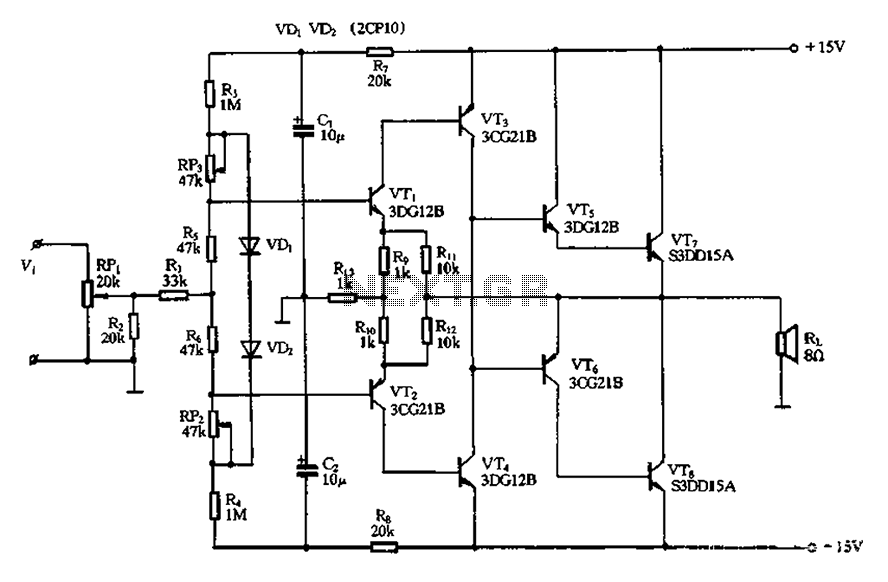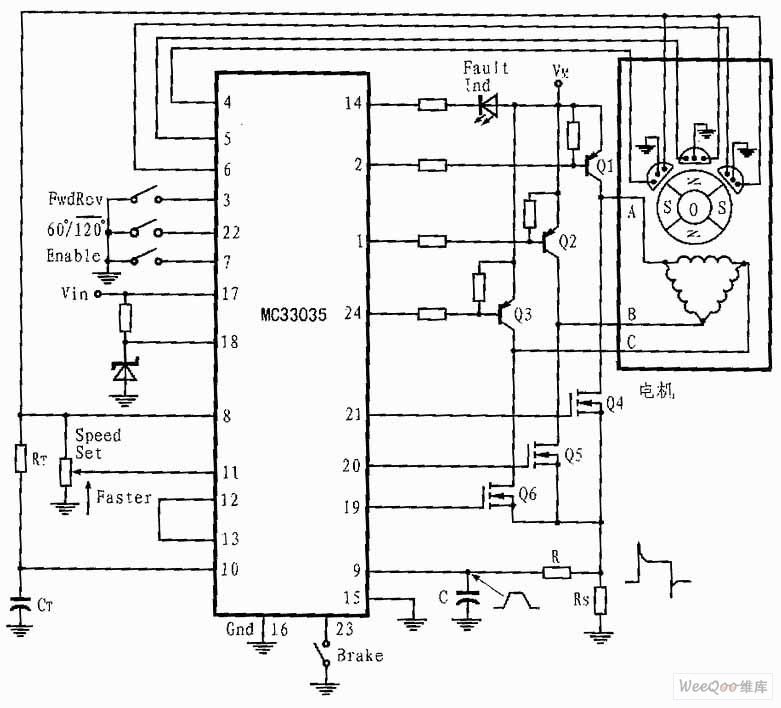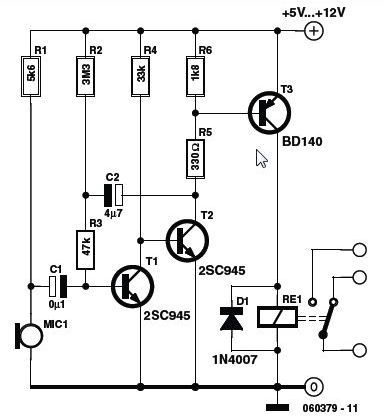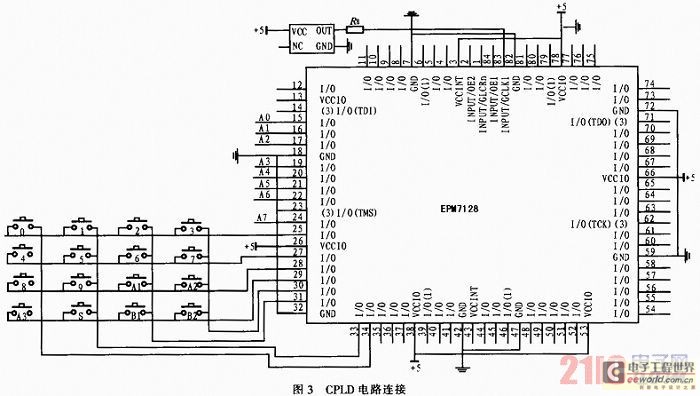
Milliammeter table circuit composed of resistance
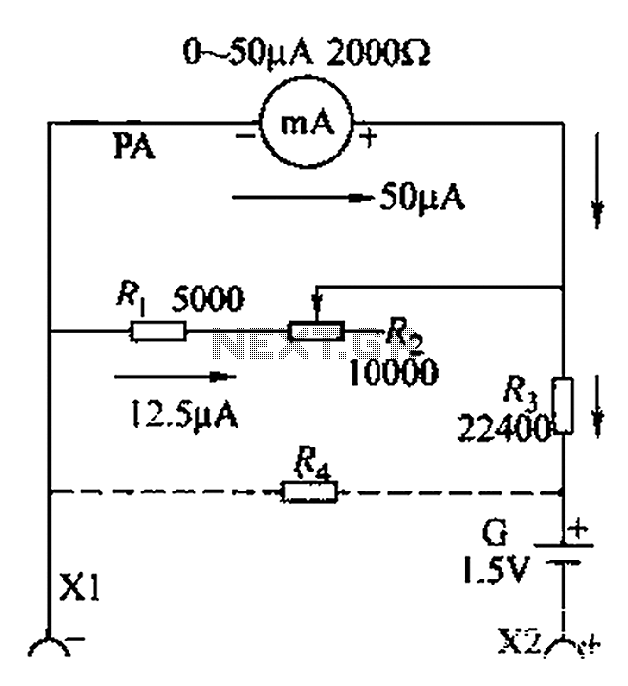
A commonly used high-sensitivity header utilizes a microammeter to create a resistance meter capable of measuring very low voltages. The design adheres to the principles of a milliameter resistance meter. The circuit diagram is illustrated in Figure 5-37, which shows a total resistance of 24,000 ohms in series with the flow resistance. The current flowing through the circuit is 62.5 microamperes, with a 50-ohm resistor in the path, while an additional 12.5-ohm resistor is used for zero-ohm adjustment. For accurate low and mid-range resistance measurements, a 2400-ohm resistor can be installed, as indicated by the dotted line in the figure.
The circuit described employs a high-sensitivity microammeter, which is essential for accurately measuring low resistance values. The microammeter is configured to read current in the microampere range, allowing for precise resistance calculations based on Ohm's law (V = IR). The circuit includes a total resistance of 24,000 ohms, which ensures that the current remains within safe limits while providing a wide measurement range.
In this configuration, the 50-ohm resistor is strategically placed to limit the current, thereby protecting the microammeter from potential overload. The additional 12.5-ohm resistor serves as an adjustment element, allowing for zero calibration of the meter. This calibration is crucial for ensuring that the readings are accurate and reflective of the true resistance being measured.
To facilitate measurements in the low and mid-range resistance values, a 2400-ohm resistor can be integrated into the circuit as indicated. This resistor acts as a reference point for the meter, enabling it to provide precise readings across a range of resistances. The installation of this resistor is further clarified by the dotted line in the schematic, which guides the user on how to incorporate it into the circuit effectively.
Overall, the design showcases a thoughtful approach to creating a highly sensitive resistance meter that leverages simple components to achieve accurate measurements, thereby making it a valuable tool for various electronic applications. Commonly used high sensitivity header is actually using microampere meter, use it to produce resistance meter using voltage can be very low, but producers still with the law an d with the principles of the mA meter resistance meter made the same. 537 circuit shown in FIG. In Figure 5-37 with the resistance and flow resistance hurricane totaled 24000fl PA resistance, the current flowing through the circuit 62. 5vA, wherein 50r, A through PA, excess 12. 5rA through zero ohm resistor adjustment horse and Rz. If you want the watch or 2400fl made 24fl center in the heart of the low, mid-range value resistor table, you can press the dotted line shown in the figure.
Installation or 24890 24fl resistor horse.
The circuit described employs a high-sensitivity microammeter, which is essential for accurately measuring low resistance values. The microammeter is configured to read current in the microampere range, allowing for precise resistance calculations based on Ohm's law (V = IR). The circuit includes a total resistance of 24,000 ohms, which ensures that the current remains within safe limits while providing a wide measurement range.
In this configuration, the 50-ohm resistor is strategically placed to limit the current, thereby protecting the microammeter from potential overload. The additional 12.5-ohm resistor serves as an adjustment element, allowing for zero calibration of the meter. This calibration is crucial for ensuring that the readings are accurate and reflective of the true resistance being measured.
To facilitate measurements in the low and mid-range resistance values, a 2400-ohm resistor can be integrated into the circuit as indicated. This resistor acts as a reference point for the meter, enabling it to provide precise readings across a range of resistances. The installation of this resistor is further clarified by the dotted line in the schematic, which guides the user on how to incorporate it into the circuit effectively.
Overall, the design showcases a thoughtful approach to creating a highly sensitive resistance meter that leverages simple components to achieve accurate measurements, thereby making it a valuable tool for various electronic applications. Commonly used high sensitivity header is actually using microampere meter, use it to produce resistance meter using voltage can be very low, but producers still with the law an d with the principles of the mA meter resistance meter made the same. 537 circuit shown in FIG. In Figure 5-37 with the resistance and flow resistance hurricane totaled 24000fl PA resistance, the current flowing through the circuit 62. 5vA, wherein 50r, A through PA, excess 12. 5rA through zero ohm resistor adjustment horse and Rz. If you want the watch or 2400fl made 24fl center in the heart of the low, mid-range value resistor table, you can press the dotted line shown in the figure.
Installation or 24890 24fl resistor horse.

